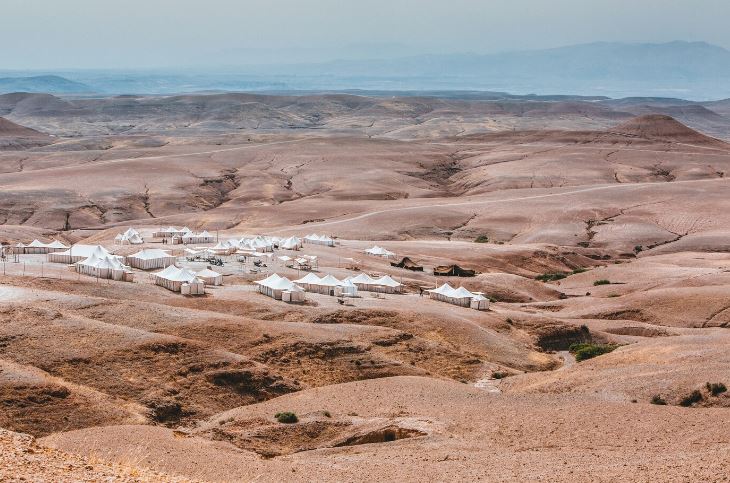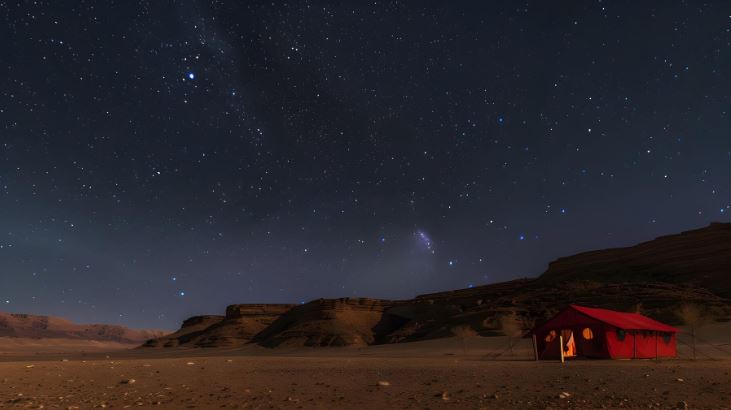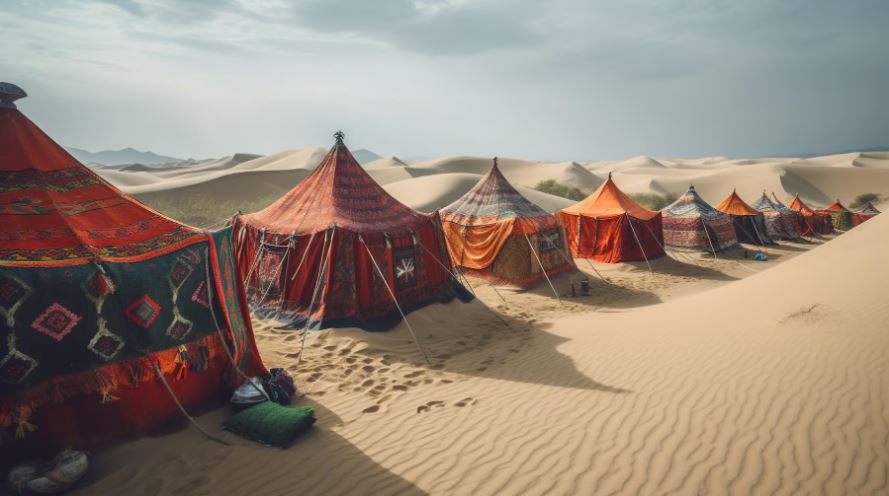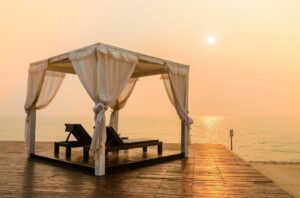Arabic tents, often known as “Arabic tents” or “black tents,” are an important element of the wandering Bedouin tribes’ cultural history in the Arabian Peninsula. These tents are not only useful shelters built to survive the harsh desert environment, but they also represent the Bedouins’ traditional way of life. This article investigates the historical significance, structural design, materials utilized, and social features of Arabic tent, offering insight into their long-standing legacy.
Historical Significance
Origins and Evolution
Arabic tents date back thousands of years to nomadic Bedouin tribes that traveled the Middle Eastern and North African deserts. These tents were crucial for survival in the arid desert climate, protecting against severe temperatures, sand, and the searing sun. The design and construction of these tents developed over time to accommodate the Bedouin people’s evolving demands and lifestyles.
Symbolism and Social Structure
Arabic tents are more than just physical buildings; they have a strong cultural and social importance. They reflect the wandering lifestyle, which values freedom, travel, and a close connection to nature. The layout and size of tents reflect the social structure of Bedouin communities, with larger tents for leaders and smaller tents for the rest of the tribe.
Structural Design
Basic Components
An Arabic tent normally made up of several main components, including the tent fabric, supporting poles, ropes, and pegs. The design is simple but very functional, allowing for quick construction and removal, which is key for the mobile lifestyle.
Arabic Tent Fabric
The cloth used in classic Arabic tents mainly made of goat or camel hair. This material was chosen due to its durability, water resistance, and capacity to give insulation against both heat and cold. The fabric’s black tone collects heat throughout the day while retaining heat at night.
Supporting Poles and Ropes
The tent is held up by metal or wooden poles that are set up in specific ways to give stability and resist powerful winds in the desert. The Arabic tent fabric is attached to the poles and the ground by natural fiber ropes, which guarantee the stability of the structure even in bad weather.
Layout and Dimensions
Arabic tents usually have a rectangular or square floor plan, with sleeping areas along the sides and a central location for celebrations. Tent sizes range from small single-family tents to huge shared tents, based on the demands of the residents.
Materials and Craftsmanship

Goat and Camel Hair
Goat or camel hair the main material weaved into traditional Arabic tents. These materials picked because of their natural water resistance, strength, and durability. The tent fabric normally woven by women in the village, who are responsible for the labor-intensive and expert work of the process.
Wooden Poles and Pegs
Locally obtained wood, like poplar or palm, is typically used to make the supporting poles since it is both lightweight and durable enough for use in the severe desert tent environment. For further stability, the tent’s fixing pegs can be made of either metal or wood.
Natural Dyes and Patterns
The artistic legacy of the Bedouin people is seen in the elaborate designs and natural dyes used to decorate traditional Arabic tents. These patterns and colors, which reflect different tribes and geographical areas, are not only visually beautiful but also a means of showing cultural identity.
Cultural Aspects Arabic Tent
Hospitality and Social Gatherings
A key component of Bedouin culture is hospitality, and social events, festivities, and hospitality are held in the Arabic tent. In the center of the tent, where food, drink, and shelter are provided, guests are frequently welcome. In Bedouin civilization, this custom of hospitality is well-founded and is seen as a symbol of dignity and deference.
Gender Roles and Privacy
Traditional gender roles and Arabic societal conventions also reflected in the tent’s layout. Men’s and women’s spaces are separated, and privacy is offered by shades or partitions. Men are usually in charge of building and maintaining the tent, while women often help significantly with its upkeep and design.
Modern Adaptations
Modern variations have also been created, yet traditional Arabic tent continue to play a significant role in Arabic culture. Arabic fabrics that offer more durability and ease of care, such as canvas and synthetic fibers, used by many Bedouin families today. Still, the tents’ basic style and cultural significance haven’t altered all that much.
Environmental Adaptations

Climate Considerations
Arabic canvas tent designs very well suited to the desert environment. The black goat hair fabric works especially well as insulation, keeping it warm at night and cool during the day. Due to its low profile and efficient shape, the tent is less likely to take damage during flooding because of its lower wind resistance.
Ventilation and Airflow
Another important component of the tent’s design is air. Because of its loose weave, the tent fabric allows for ventilation while maintaining weather protection. An opening at the top, usually located in the center of the tent, helps release hot air and keeps an ideal internal temperature.
Conclusion
The creativity and flexibility of the Arab people appear in the traditional Arabic tent building and design. In addition to serving as useful shelters in the dry climate. These tents are significant cultural icons representing Arab customs and values. The long history of Arabic tents still honored and kept despite modern developments, which is proof of the rich cultural past of the Persian Gulf region.





